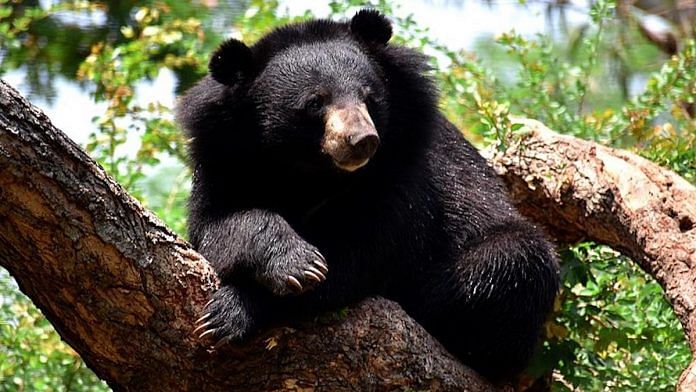Dehradun: Worried about rising cases of wild bear attacks in the hill districts of Uttarakhand, the state forest department has decided to tag them with GPS-enabled radio collars to track their movements.
The department will initially tag four bears. Officials say the exercise comes at a time when the human-bear conflict is rising in the state, with more than 1,600 attacks in the last 20 years.
“Bear attacks are on a rise. More than 1,630 incidents of human-bear conflicts took place in 20 years since the state’s formation, and the numbers are increasing every year,” said J.S. Suhag, Principal Chief Conservator of Forests and Uttarakhand’s chief wildlife warden.
“The department has identified four beasts to put satellite GPS collars on first. These bears had been on an attacking spree in Rudraprayag, Pauri and Chamoli districts. The task of tagging has been assigned to the Wildlife Institute of India (WII). Currently, the bears’ movements and locations are being tracked manually to prevent attacks on the villagers,” Suhag said.
The chief wildlife warden added that the radio collars are being procured from Germany. “The bear population in Uttarakhand is around 500, but only a select number will be collared (sic) with a GPS system for the first time. The collars will act as an early warning device and help the officials take necessary remedial steps to save the lives of people in the higher Himalayas, where most of the cases have been reported. Bears will be sent back to their habitats after the satellite GPS collars are put around them,” Suhag said.
60 deaths in 20 years
According to Uttarakhand forest department officials, only leopards, elephants and tigers had been fitted with radio collars so far. The last animals to be fitted with the collars were three elephants with a history of frequenting human settlements near the Kumbh zone in Haridwar, during this year’s Kumbh Mela.
Officials say around 60 people have died in the last 20 years due to bear attacks, while a large number of people have suffered disabilities.
At least four people have been seriously injured in bear attacks in the last two months. This includes a 40-year-old man in Chamoli district who suffered eye injuries and a woman who was hit by a bear in Joshimath on 13 August. In July, a 28-year-old villager was attacked in Rikhrikhal block of Pauri, when he took his goats for grazing. A 50-year-old man was hospitalised in Khatima block, Udham Singh Nagar, on 14 August.
Also read: Jim Corbett — the man known for being both a hunter and champion of tigers
Shrinking hibernation period, rapid urbanisation
Wildlife experts attribute the rise in human-bear conflicts in Uttarakhand to two reasons: Shrinking hibernation period and rapid urbanisation.
“Hibernation time of wild bears in the higher Himalayas has been considerably reduced to almost 64 days in the last 25-30 years. It keeps them active for a longer time, especially from December-March, when they used to switch off all their activities and were seldom even seen around till almost two-and-a-half decades ago,” said S. Sathya Kumar, senior scientist, WII.
Kumar stated that rapid urbanisation leading to an increase in household waste and garbage is another reason for the rising number of attacks. Almost every city in the hill state which is known for bear attacks has garbage dumping sites 4-5 kilometres away from forest cover. Decaying and foul-smelling waste food materials at these sites attract bears. As a result, they are active even during the nights, when food is not expected to be available, the scientist said.
“Apart from this, human infringement leading to a change in landscapes and transformation of forests into well-prepared apple and other fruit orchards in Uttarakhand, Himachal Pradesh, Jammu & Kashmir and Northeastern states has also acted as a big pull for the bears to enter human habitats, leading to attacks,” added Kumar.
“A bear has an excellent memory and smelling power that helps it track food even from big distances, as it is always on the lookout for food. This has become a big menace in countries like the US, Africa and Europe, forcing them to design and develop bear-proof bins,” he pointed out.
(Edited by Neha Mahajan)
Also read: Human-animal conflict is clear & present danger, and India can’t afford to ignore it



